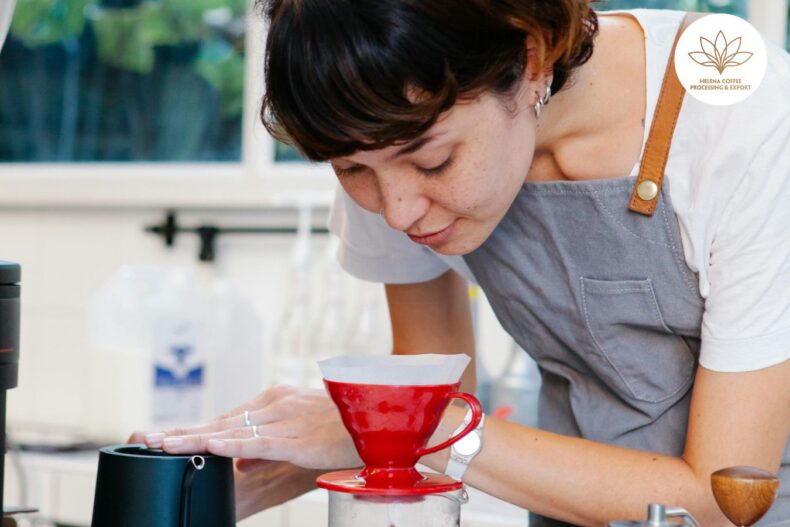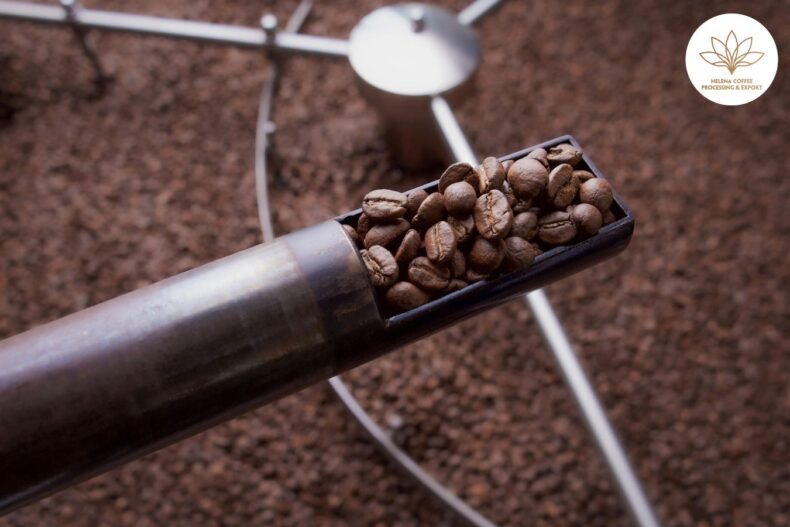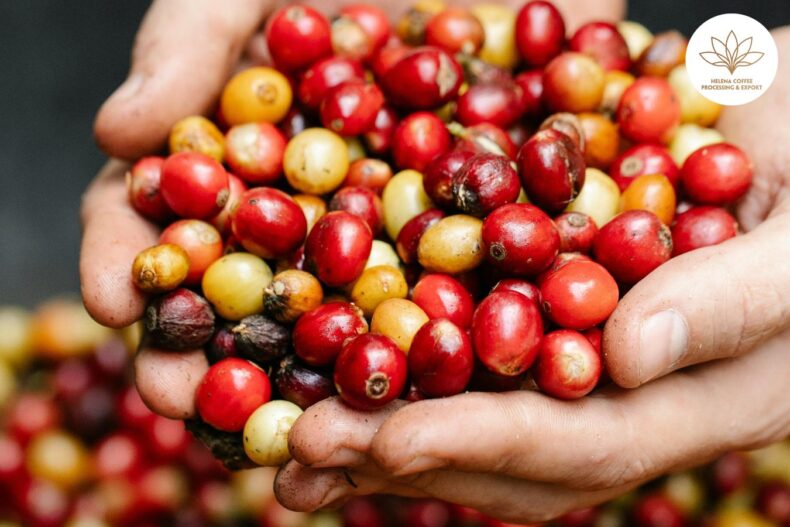
Coffee has been one of Vietnam’s most essential commodities for decades, and the country is among the most significant coffee exporters globally. In 2020, Vietnam exported around 1.61 million tons of coffee, generating approximately $2.7 billion in revenue.
Dak Lak Province, located in the Central Highlands region of Vietnam, is the largest coffee-growing area in the country, accounting for about 40% of the nation’s coffee production. This article will explore the Dak Lak coffee industry’s history, current state, and prospects.
Introduction Dak Lak Coffee Industry
Coffee production has significantly contributed to Vietnam’s economy, accounting for nearly 10% of the country’s export earnings. Among the regions that produce coffee in Vietnam, Dak Lak Province is the largest and most important.
The coffee industry has played a vital role in the province’s economic development, providing employment opportunities and boosting rural livelihoods. This article will examine the Dak Lak coffee industry’s growth, challenges, and prospects, focusing on the government’s initiatives to support the sector.
History of Coffee in Vietnam
Vietnam has a long history of coffee cultivation, dating back to the late 19th century when the French introduced coffee plants to the country.
Arabica is the first coffee variety introduced into our country in 1857 through some French missionary priests. The first is to be experimentally planted at Christian churches in some provinces in the North, such as Ha Nam and Phu Ly. After that, coffee trees were planted and expanded into Thanh Hoa, Nghe An, and Ha Tinh provinces.
Then spread to central provinces such as Quang Tri and Quang Binh. After the war, the coffee and tea gardens remained maintained. Therefore, this area has a very high distribution of coffee and tea trees. Finally, new coffee trees gradually developed in the South Central Highlands and the Southeast. People began to realize that the Central Highlands was the most suitable place to grow coffee.
After the Arabica coffee variety was introduced to Vietnam in 1857, then in 1908, France imported two more types of coffee into Vietnam. Those are the coffee beans (robusta) and jackfruit (Liberia). After a while, the Western colonists found that coffee and tea varieties did not bring high economic benefits, so they brought coffee varieties from Congo to plant in the Central Highlands.
Here, coffee trees grow very strongly, and the area of coffee trees is increasing. And the Central Highlands has become the area with the largest coffee growing area in our country both in terms of scale and reputation. Nowhere in Vietnam has famous coffee at home and abroad, and simultaneously associated with a geographical area. Bring many legends like Buon Ma Thuot coffee.
However, it was not until the 1990s that the country’s coffee production witnessed a significant surge, thanks to government policies that encouraged coffee cultivation to diversify agriculture and boost export earnings. Today, coffee is one of the essential agricultural commodities in Vietnam, and the country is among the world’s largest coffee exporters.
Dak Lak Province: The Coffee Capital of Vietnam
Dak Lak Province is located in the Central Highlands of Vietnam, covering an area of approximately 13,000 square kilometers. The province is known for its vast coffee plantations covering nearly 204,000 hectares, accounting for about 40% of Vietnam’s coffee production.
The province’s coffee industry is the local farmers’ main livelihood source, with more than 200,000 households involved in coffee cultivation.
Climate and Soil of Dak Lak
The favorable climate and soil conditions in Dak Lak make it an ideal location for coffee cultivation. The province experiences a tropical climate, with temperatures ranging from 20°C to 32°C throughout the year.
The region receives an annual rainfall of about 2,000-2,500mm, providing adequate water for coffee growth. The soil in Dak Lak is acidic, with a pH ranging from 4.5 to 5.5, which is suitable for growing Arabica and Robusta coffee.
Coffee Production Process in Dak Lak
The coffee production process in Dak Lak involves several stages, from planting the coffee trees to harvesting and processing the coffee beans. Coffee trees in Dak Lak typically begin bearing fruit after three to four years of planting. Once the coffee cherries ripen, they are harvested manually or using machines. After the harvest, the coffee cherries are sorted to remove any defective ones.
The next stage involves processing the coffee beans, which can be wet or dry. The wet processing method consists of removing the coffee cherries’ outer layers and fermenting the beans in water to remove the mucilage. The dry processing method involves drying the coffee cherries under the sun and removing the outer layers to obtain the coffee beans. The processed coffee beans are then roasted and packaged for export.
Challenges Faced by the Dak Lak Coffee Industry
Despite the growth and success of the Dak Lak coffee industry, several challenges hinder its growth and development. The most significant challenge is the aging coffee trees, which reduces yields and quality. The use of outdated farming practices and lack of access to modern farming technologies and equipment also affect the productivity and quality of coffee beans.
Another challenge faced by the Dak Lak coffee industry is the price volatility of coffee in the global market. The sector is heavily dependent on exports, and any fluctuations in coffee prices affect the income of the farmers and the industry as a whole.
Government Initiatives to Promote Coffee Industry in Dak Lak
The Vietnamese government has implemented several initiatives to support and promote the coffee industry in Dak Lak. These initiatives include adopting modern farming practices and using new technologies and equipment to improve productivity and quality.
The government has also established research institutes to study and develop new coffee varieties resistant to diseases and pests that can thrive in the region’s climate and soil conditions.
The government has also encouraged the formation of coffee cooperatives to empower farmers and improve their bargaining power in the market. Additionally, the government has introduced policies to stabilize coffee prices and provide financial assistance and subsidies to farmers to improve their income and livelihoods.
Opportunities for Growth and Expansion
Despite the challenges faced by the Dak Lak coffee industry, there are several opportunities for growth and expansion. The rising global demand for high-quality coffee presents an opportunity for the industry to increase its production and exports.
Adopting modern farming practices and using new technologies and equipment can also improve productivity and quality, leading to higher yields and income for farmers. Furthermore, developing the coffee tourism industry in Dak Lak can provide additional revenue streams for farmers and the industry.
The province’s unique coffee culture and scenic coffee plantations can attract domestic and international tourists, creating new opportunities for growth and development.
Future of the Dak Lak Coffee Industry
The Dak Lak coffee industry has a promising future, with the government’s support and initiatives to improve productivity, quality, and sustainability. Adopting modern farming practices and using new technologies and equipment can increase yields and quality, leading to higher incomes for farmers and the industry.
The rising global demand for high-quality coffee also allows the industry to expand its production and exports, creating new revenue streams and boosting the local economy. The Dak Lak coffee industry is poised for a bright and prosperous future with the government’s continued support and resilience.
Conclusion
The Dak Lak coffee industry is a critical sector of Vietnam’s economy, providing employment opportunities and contributing significantly to the country’s export earnings. Despite the challenges faced by the industry, there are several opportunities for growth and development, with the government’s support and initiatives aimed at improving productivity, quality, and sustainability.
With the rising global demand for high-quality coffee and the development of the coffee tourism industry, the Dak Lak coffee industry has a promising future, with the potential to generate more income and improve the livelihoods of farmers and local communities.
FAQs
- What is the history of coffee production in Vietnam? Coffee production in Vietnam dates back to the late 19th century when the French introduced coffee plants. However, it was not until the 1990s that the country’s coffee production witnessed a significant surge, thanks to government policies encouraging coffee cultivation.
- What is Dak Lak Province known for? Dak Lak Province is known for its vast coffee plantations covering nearly 204,000 hectares, accounting for about 40% of Vietnam’s coffee production.
- What are the challenges faced by the Dak Lak coffee industry? The challenges faced by the Dak Lak coffee industry include aging coffee trees, using outdated farming practices, lack of access to modern farming technologies and equipment, and price volatility of coffee in the global market.
- What initiatives has the Vietnamese government implemented to support the Dak Lak coffee industry? The Vietnamese government has implemented several initiatives to support and promote the Dak Lak coffee industry, including adopting modern farming practices, using new farming technologies and equipment, establishing research institutes, and encouraging the formation of coffee cooperatives.
- What is the future of the Dak Lak coffee industry? The Dak Lak coffee industry has a promising future, with the government’s support and initiatives aimed at improving productivity, quality, and sustainability, the rising global demand for high-quality coffee, and the development of the coffee tourism industry.


